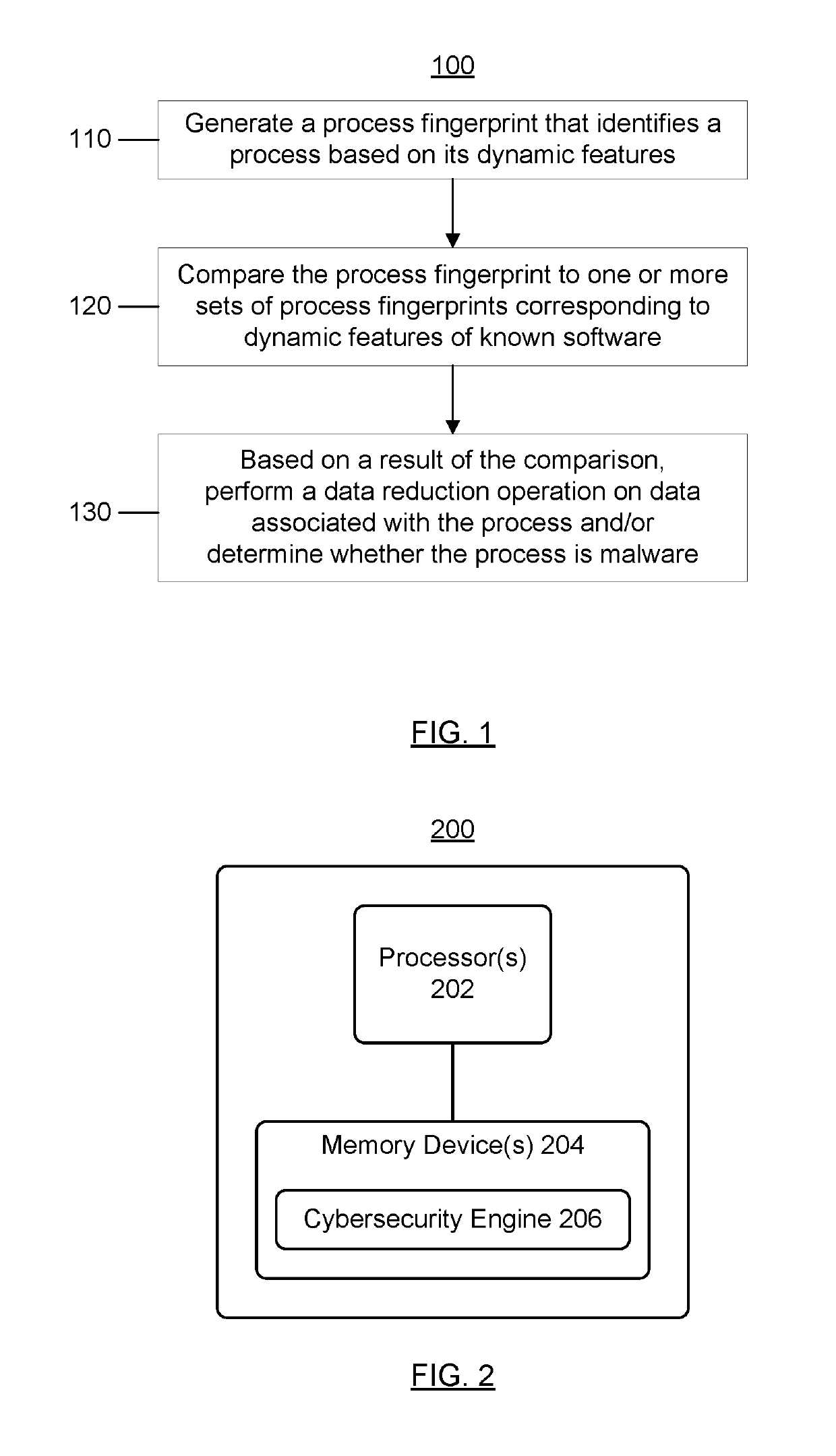Cybersecurity systems and techniques
a cyber-security and system technology, applied in the field of cyber-security systems and techniques, can solve the problems of consuming a significant portion of the computer system's processing resources, affecting the detection of suspicious process behavior, and affecting the performance of the host computer system, so as to facilitate forensic investigation, and reduce the cost of forensic investigation
- Summary
- Abstract
- Description
- Claims
- Application Information
AI Technical Summary
Benefits of technology
Problems solved by technology
Method used
Image
Examples
Embodiment Construction
[0025]FIG. 1 shows a cybersecurity method 100, in accordance with some embodiments. In some embodiments, the method 100 facilitates behavior-based malware detection and response, while using significantly less data processing resources and / or data storage resources than conventional behavior-based malware detection and response techniques. In step 110 of the malware threat detection and response method 100, a “process fingerprint” (or “dynamic signature”) of a process is generated. The process fingerprint identifies a process based at least in part on its dynamic features. In step 120, the process fingerprint is compared to one or more sets of process fingerprints corresponding to dynamic features (e.g., behavior) of known processes (e.g., processes that are known to be legitimate, processes that are known to be malware, and / or other processes). In step 130, based on a result of the fingerprint comparison(s), one or more actions are taken to facilitate behavior-based malware detecti...
PUM
 Login to View More
Login to View More Abstract
Description
Claims
Application Information
 Login to View More
Login to View More - R&D
- Intellectual Property
- Life Sciences
- Materials
- Tech Scout
- Unparalleled Data Quality
- Higher Quality Content
- 60% Fewer Hallucinations
Browse by: Latest US Patents, China's latest patents, Technical Efficacy Thesaurus, Application Domain, Technology Topic, Popular Technical Reports.
© 2025 PatSnap. All rights reserved.Legal|Privacy policy|Modern Slavery Act Transparency Statement|Sitemap|About US| Contact US: help@patsnap.com

